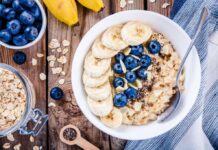
The ‘chicken and broccoli’ diet, long heralded by fitness enthusiasts as a muscle-building staple, sits at the intersection of personal health choices and broader cultural and environmental impacts that many have never considered.
At a Glance
- Protein requirements vary by individual, with the National Academy of Medicine recommending at least 0.8 grams per kilogram of body weight daily
- The traditional chicken and broccoli diet can lead to nutritional deficiencies and is not sustainable for long-term health
- Plant-based proteins like beans and soy offer nutritious, cost-effective alternatives to animal proteins with fewer health risks
- Cultural food traditions are increasingly recognized as important in developing inclusive dietary guidelines
- A varied, whole-food diet rich in plants offers the best approach for long-term health and weight management
The Protein Equation: How Much Do You Really Need?
Protein is fundamental to our health, contributing to muscle development, immune function, and numerous biochemical processes. Despite protein’s importance, there’s considerable confusion about how much we actually need. The National Academy of Medicine provides clear guidance, recommending adults consume a minimum of 0.8 grams of protein per kilogram of body weight daily, which translates to roughly 7 grams for every 20 pounds of weight. For most adults, protein should constitute between 10% and 35% of daily caloric intake.
Not all proteins are nutritionally equivalent. Complete proteins, containing all nine essential amino acids, predominantly come from animal sources. However, the health implications vary significantly between protein types. Red meat consumption is associated with increased risks of heart disease, diabetes, and certain cancers, while plant-based proteins correlate with lower disease risks. This distinction becomes crucial when evaluating popular high-protein diets like the chicken and broccoli regimen.
The Chicken and Broccoli Diet: Effective or Excessive?
The chicken and broccoli diet has gained popularity as a quick weight loss strategy. This restrictive eating plan centers on lean protein and specific vegetables while severely limiting carbohydrates. While it may produce rapid initial weight loss, health professionals caution that these results primarily reflect water weight reduction rather than sustainable fat loss. Additionally, the diet’s extreme limitations lead to serious nutritional gaps, low energy levels, and potentially disordered eating patterns.
Dietary monotony presents another significant challenge. The chicken and broccoli diet falls drastically short of providing essential nutrients, causing boredom and leading to inevitable rebound weight gain. Instead of such restrictive approaches, sustainable weight management comes through balanced nutrition with appropriate portions and dietary variety, incorporating proteins from diverse sources along with complex carbohydrates and healthy fats.
Beyond Chicken: Cultural Inclusivity in Protein Choices
The fitness industry’s emphasis on chicken, broccoli, and rice as the quintessential muscle-building meal represents a narrow, Euro-centric view of nutrition. This perspective often unfairly disparages staple foods from other cultures—including white rice, pasta, beans, and lentils—that offer comparable nutritional benefits. Many traditional diets worldwide have sustained healthy populations for generations without conforming to Western dietary ideals.
Plant-based proteins deserve particular attention for their nutritional profile and sustainability benefits. Soy, beans, and other legumes provide high-quality protein complemented by fiber, vitamins, and minerals, often at a fraction of meat’s cost. These options simultaneously support health goals and reduce environmental impact. The 2025 Dietary Guidelines Advisory Committee is now working to make recommendations more culturally inclusive, recognizing nutrient-dense foods from diverse cultural traditions.
A Balanced Approach to Protein and Health
The most compelling evidence from nutrition research supports a varied, predominantly whole-food diet rich in plant foods. Longevity studies of communities with exceptional health span show flexible dietary patterns centered on natural foods and regular physical activity, without obsessive focus on specific nutrients or food components. This approach contrasts sharply with the restrictive chicken and broccoli regimen popular in fitness circles.
Healthful protein sources include beans, nuts, fish, and poultry, each contributing different nutritional advantages. The Harvard School of Public Health recommends these proteins specifically for disease prevention and weight management. When considering protein supplements, caution is warranted—protein powders aren’t FDA-regulated and may contain unexpected ingredients. For most adults, whole food protein sources provide optimal nutrition without the uncertain composition of supplements.
Sources:
https://www.mdpi.com/2072-6643/11/12/2862
The Chicken And Broccoli Diet: Why This Isn’t The Weight Loss Solution You’ve Been Looking For
https://www.quora.com/Is-it-safe-to-eat-just-chicken-breast-and-broccoli-for-2-weeks
https://www.menshealth.com/nutrition/a64033215/best-muscle-meal/


















